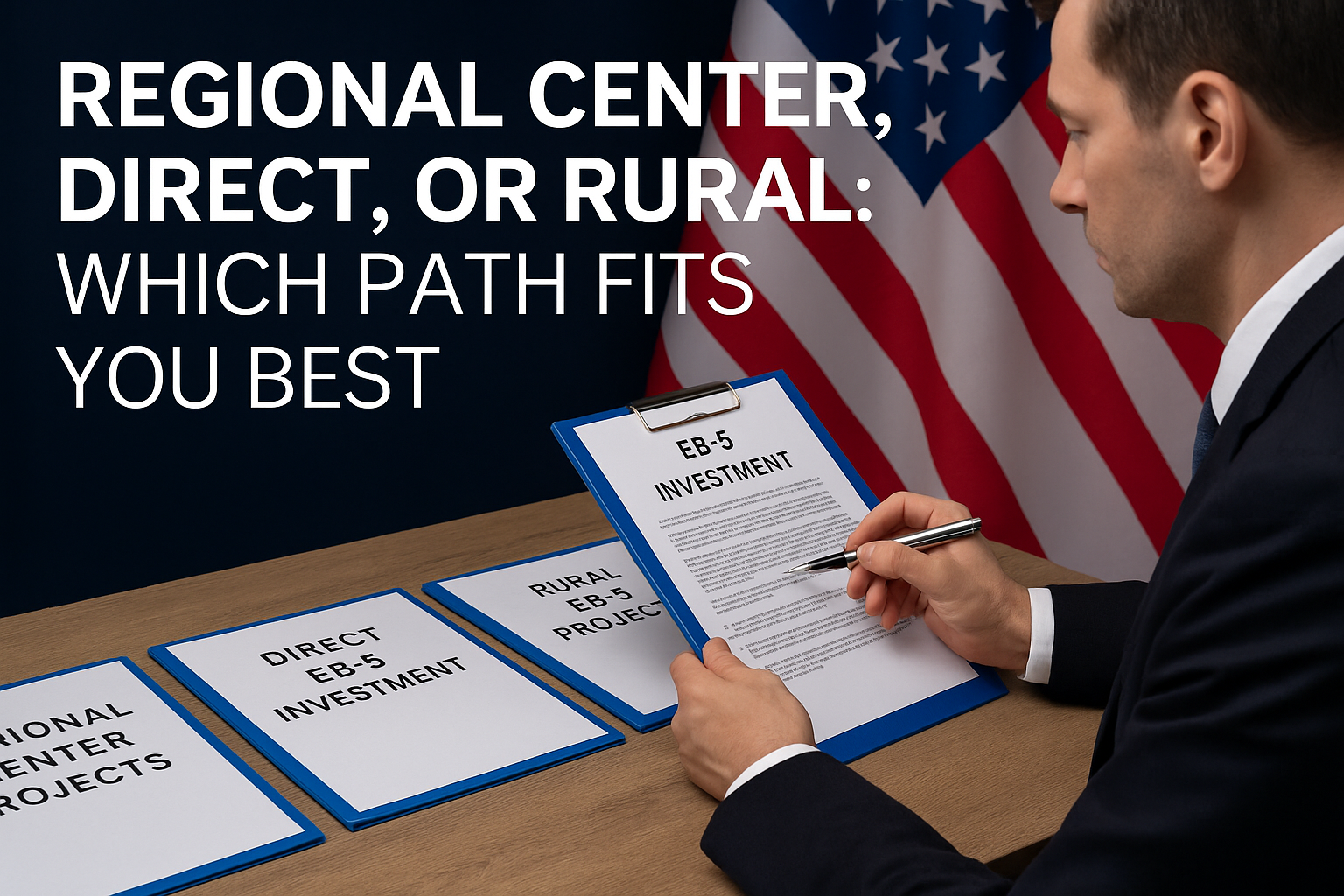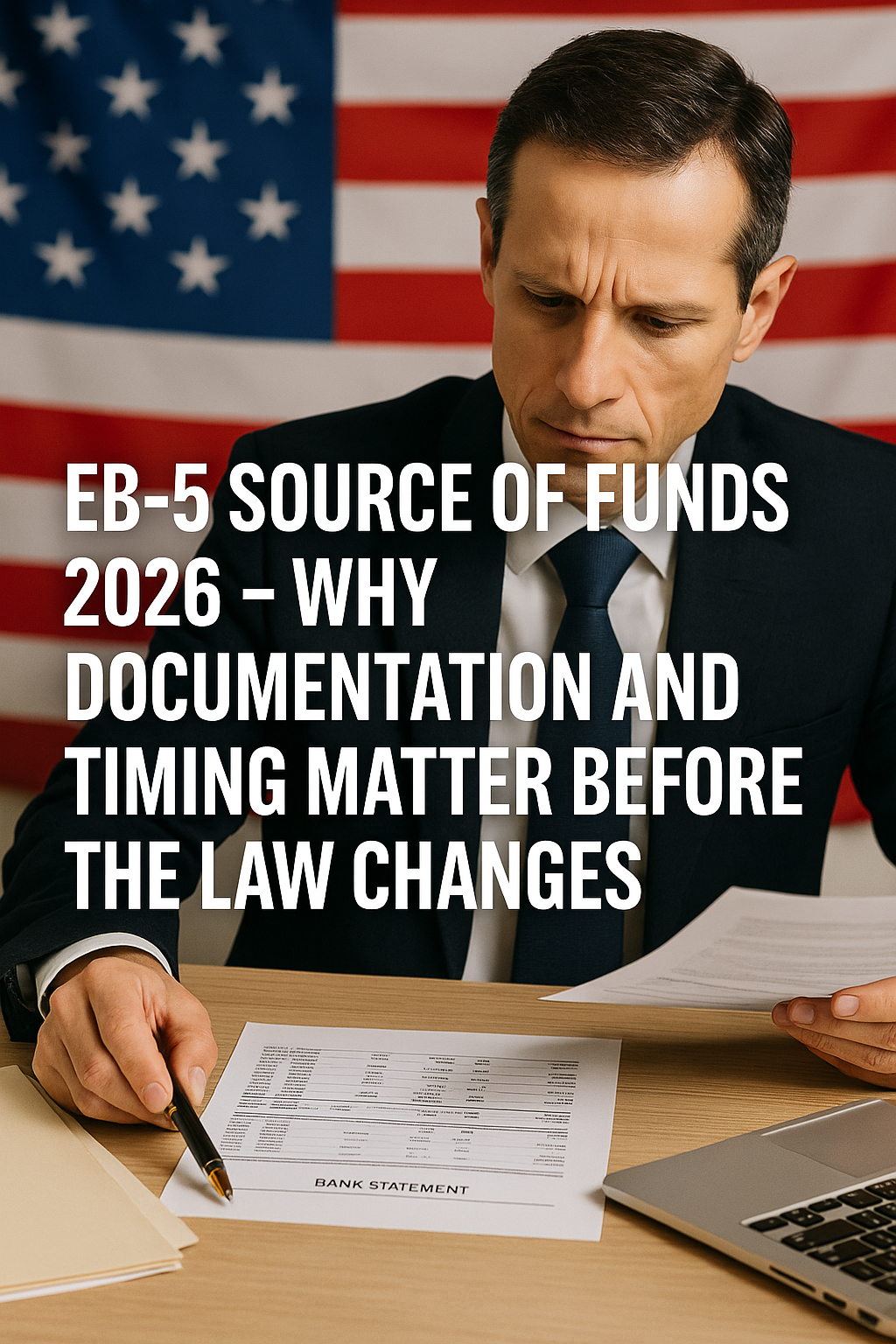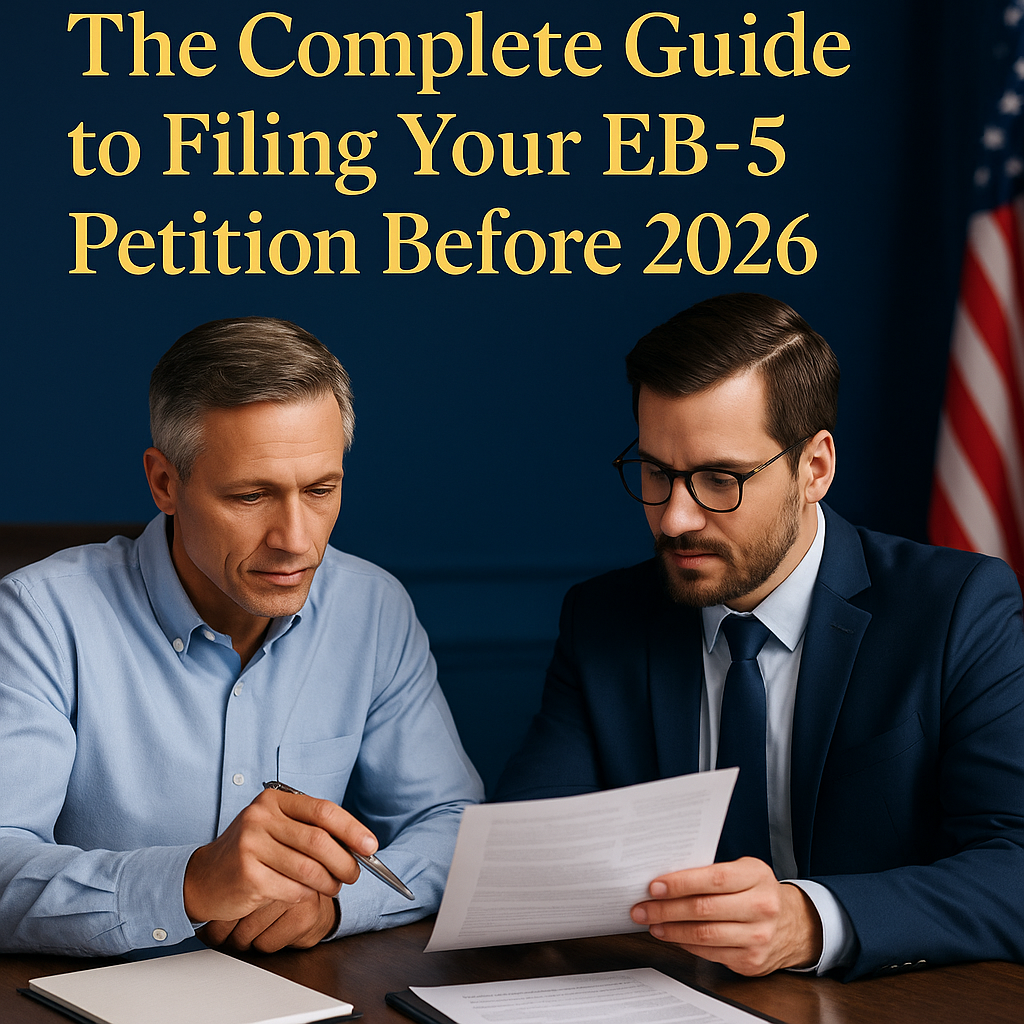Choosing the right investment structure is one of the most critical decisions an EB-5 investor will make.
Under the EB-5 Reform and Integrity Act of 2022, investors currently have three legal options:
- The Regional Center model
- The Direct Investment model and the Rural
- Targeted Employment Area (TEA) model.
Each structure operates under a different regulatory framework and carries its own set of compliance obligations, documentation standards, and immigration advantages. Understanding these distinctions before committing funds is essential, especially since the current law will remain valid only until September 30, 2026.
The Regional Center Program: Institutional Framework and Legal Oversight
The Regional Center Program continues to be the most commonly used structure for EB-5 investors. It is authorized by the U.S. Congress and supervised by the U.S. Citizenship and Immigration Services (USCIS).
Regional Centers are permitted to pool capital from multiple investors and demonstrate job creation through both direct and indirect means using accepted economic models. This structure is designed for investors who prefer a passive investment role and professional fund management.
Legally, the Regional Center model offers significant advantages. It allows investors to rely on indirect job creation models, removing the need for personal operational involvement. The 2022 Reform and Integrity Act further strengthened this system by requiring annual reporting through Form I-956G, independent fund administration, and full disclosure of agents, promoters, and fees. These measures significantly enhance transparency and investor protection.
What investors should care about:
Before investing, request copies of the Regional Center’s USCIS designation letter, its latest compliance filing, and evidence that the project uses a licensed fund administrator. Confirm that investor funds are placed in a segregated account and monitored by an independent third party. If a Regional Center cannot provide these documents, the project is not compliant under current law.
Direct EB-5 Investment: Control with Higher Responsibility
A Direct EB-5 Investment involves placing capital directly into a business owned or managed by the investor. To qualify, the enterprise must create at least ten full-time W-2 employees for U.S. workers. Only direct employment counts, and all positions must be proven with payroll records, tax filings, and corporate documentation.
This model allows investors to maintain full control of their business operations and potentially earn profits, but it also brings higher legal responsibility. Investors must participate in management or policymaking and ensure the business remains compliant with both immigration and employment regulations.
What investors should care about:
If you pursue a Direct EB-5, confirm that your business plan meets the USCIS “Matter of Ho” standard. This includes a credible market analysis, a clear job creation plan, and realistic financial projections. Keep all business licenses, tax identification numbers, and payroll documents ready for submission. A single missing element can jeopardize job creation evidence and lead to a denial.
Rural and TEA Projects: The Strategic and Fast-Track Category
The Reform and Integrity Act created a new opportunity for investors through Rural and Targeted Employment Area projects. These are developments located in rural regions or areas with unemployment at least 150 percent of the national average.
This category provides three clear advantages:
- Lower minimum investment amount of 800,000 USD.
- Reserved visa allocation, which means faster visa issuance and reduced waiting times.
- Priority USCIS processing for rural projects.
For investors from countries with high EB-5 demand, such as Vietnam, China, and India, this is currently the most time-efficient route to permanent residency.
What investors should care about:
Always verify the project’s TEA or rural status. Request the official certification from a qualified economist or state authority. Ensure the Regional Center has filed supporting census data with USCIS. Do not rely solely on marketing materials. Only official certification confirms eligibility for the reduced investment threshold and visa priority.
Evaluating Risk and Compliance in Each Option
Every EB-5 structure carries different levels of legal protection and operational risk.
Investors should carefully assess where their primary objective lies: control, speed, or stability.
| Investment Path | Advantages | Risks | What to Verify |
| Regional Center | Passive role, indirect job creation, professional oversight | Project performance risk, dependence on management team | USCIS designation, fund administration agreement |
| Direct EB-5 | Full ownership, potential business profit | Higher operational and compliance responsibility | Payroll documentation, business plan credibility |
| Rural / TEA | Lower investment, priority processing, reserved visas | Limited project selection, geographic restriction | TEA certification, Regional Center compliance |
Professional advice:
The safest EB-5 cases are not those with the highest return but those that provide the strongest documentation and compliance. Investors should prioritize transparency and USCIS-approved structures over marketing promises.
How Policy and Regulation May Change After 2026
When the current EB-5 Law expires in September 2026, Congress will decide whether to extend, revise, or temporarily suspend the program. Historically, every reauthorization has brought significant changes.
The next update could include:
- A higher minimum investment threshold adjusted for inflation.
- Stricter anti-money-laundering verification and tax documentation requirements.
- Expanded reporting duties for Regional Centers.
- Narrower definitions of eligible TEA or rural zones.
Investors who file before the 2026 deadline are protected under the “grandfathering” clause, meaning their applications will continue to be processed under the current law even if future rules become more restrictive.
What investors should care about:
Do not wait until late 2026 to begin the process. A properly prepared case requires months of document collection, legal review, and fund transfers. Filing early ensures your petition is locked into today’s stable requirements and predictable adjudication standards.
Choosing the Right Path for Your Goals
Selecting the right EB-5 structure depends on personal priorities and risk tolerance.
- If your main goal is security and simplicity, a Regional Center project offers professional management and consistent compliance oversight.
- If you are an entrepreneur seeking to expand your business presence in the United States, a Direct EB-5 may align with your long-term commercial objectives.
- If you want faster visa processing and lower investment cost, a Rural or TEA-based Regional Center project is the most strategic choice under current law.
Regardless of the path you choose, insist on due diligence. Review project offering documents, fund flow statements, and USCIS approvals with qualified legal counsel. The most successful EB-5 investors are those who balance opportunity with verification.
Conclusion
Each EB-5 pathway is a legitimate route to U.S. permanent residency, but each demands different levels of oversight, evidence, and timing.
The Regional Center model remains the most structured and compliant. Direct investment appeals to business owners willing to take on operational responsibility. Rural and TEA projects now lead in efficiency, combining lower capital entry with faster adjudication.
As 2026 approaches, investors should act while the rules remain clear. In EB-5, informed timing and proper documentation determine success more than any other factor. Those who prepare now will benefit from both predictability and opportunity.
Part of The EB-5 Countdown Series 2026
This article is part of The Immigration Magazine’s exclusive editorial collection:
“The Final Window: Secure Your U.S. Green Card Before the Law Changes.”
Next Article: Step-by-Step: Filing Your EB-5 Petition Before the Deadline
Subscribe to The Immigration Magazine newsletter to receive the full series EB-5 2026 Guide and expert insights before the program’s renewal date on September 30th, 2026.













